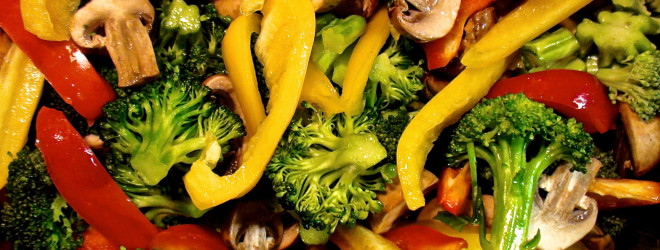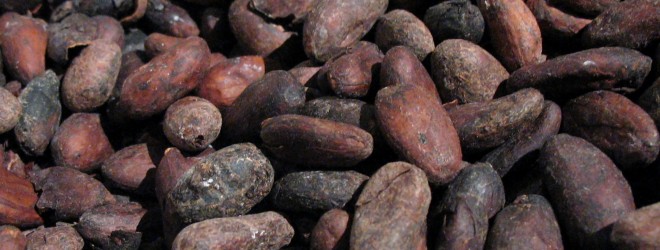A few months back I addressed the issue of veganism in my blog, and provided a series of snippets and references from my book, suggesting that a long term vegan diet – especially in women and children – can be dangerous. This post generated a fair amount of reaction by vegans, but it also opened up the possibility of a more nuanced, well-reasoned approach to this issue. Today I want to continue this debate, by addressing the issue of raw foodism. The following is taken from my book, Food As Medicine, and is a compilation of my thoughts on this issue:
Today there are an increasingly large number of people claiming that raw food is the best way to eat most or all of your food, informed by the theories of early 20th century advocates such as Edward Howell, Ann Wigmore and Herbert Shelton. Like veganism raw foodism has become a kind of underground social movement that equates social change with dietary choice. Broadly speaking raw foodists usually lay claim to one or two camps: those that only eat raw vegetable foods such as raw vegans, fruitarians and sproutarians, and the other that also or exclusively eats raw animal products.
Historically there are very few examples of raw food cultures. One notable example are the Inuit peoples, an aboriginal group of northern Canada called ‘Eskimo’ (‘eaters of raw meat’) by their southern Cree neighbors. While it is true that the Inuit do eat some raw fish and meat, the idea that they traditionally ate raw food exclusively is contradicted by ethnographic reports.[i] Besides the Inuit the only other indigenous groups that regularly eat raw meat also live in circumpolar regions, where frigid temperatures prevent against microbial growth and food-borne illness.
Raw foodism maintains several arguments, central of which is the idea that raw food contains vitally important enzymes that aid in digestion, and that by cooking food we destroy them. Taken at face value this theory seems to have a rational basis, but it doesn’t account for the fact that the body produces far more enzymes in its digestive secretions than are found in the food itself. If it were true that these enzymes were necessary for digestion it would stand to reason that the body would not need to produce its own enzymes, when in reality the body produces up to five liters (1.3 gallons) of digestive juices on a daily basis. Like all proteins, enzymes are denatured and digested in the gut into their constituent peptide fragments, rendering them devoid of any significant enzymatic activity.
Raw foodism suggests that raw food has a higher nutrient value than cooked food, but what this fails to take into account is the issue of bioavailability. While cooking does reduce the nutrient content in some foods, it dramatically enhances nutrient bioavailability, offsetting any loss in nutrients by reducing the energy required for digestion and assimilation. According to anthropologists humans have been cooking food for more than a million years, and in the process have undergone both anatomical and physiological changes that reflect our reliance upon it.[ii] Compared to our primate cousins, humans have a much smaller gut and yet characteristically larger brains (i.e. a higher encephalization quotient). Research suggests that cooking enhanced the efficiency of nutrient absorption, allowing for the evolution of a much smaller absorptive surface and hence smaller digestive tract, while at the same time boosting the energy intake required for the characteristically larger and more complex human brain.[iii]
Some raw foodists also believe that cooking destroys naturally occurring microbes such as Lactobacilli that support gut health and prevent disease. Unless the raw food has been fermented to allow these “friendly” bacteria to out-compete other microbes however, raw food may also contain pathogenic bacteria such as Campylobacter, Clostridium, Salmonella and Escherichia coli. Other potential pathogens in raw food include pathogenic viruses (e.g. norovirus, enterovirus, hepatitis A virus), pathogenic fungi (Aspergillus, Fusarium) and parasites (Giardia lamblia, Entamoeba histolytica) that can cause both acute and chronic illness. In contradistinction to the claim that raw food is healthy, there are an estimated 76 million food-borne illnesses each year in the United States, accounting for 325,000 hospitalizations and 5,000 deaths, all from eating raw or improperly cooked food.[iv] This is not to suggest that raw food is necessarily unhealthy, but that there are certain risks that need to be taken into consideration.
The last of the major arguments put forward by raw foodists is that cooking food results in the formation of toxins including glycotoxins, heterocyclic amines, transfats and nitrosamines. Here the argument for raw food finds its most strength, but much of this concern relates to specific cooking methods rather than cooking itself. In some instances raw food does have apparent benefits over cooked food, but these theoretical issues need to be weighed against empiricism and traditional practices. Although often couched in simplistic terms, the issue of raw versus cooked food isn’t as black and white as many believe.
From a traditional medical perspective raw food can be eaten as part of a healthy diet but always with an eye to the nature of the food and the capacity of digestion. According to Ayurveda people that have strong digestion (pitta) can usually tolerate raw food on a regular basis, but consuming raw food all the time aggravates the quality of coldness in the body (vata, kapha), diminishing digestive activity and vital energy – a notion supported by anthropological evidence.[v]Although support for a raw food diet is weak in traditional systems such as Ayurveda and Chinese medicine, raw food has special therapeutic application in the treatment of disease and in particular to promote detoxification (p. 216).
[i] Stefansson V. 1913. My life with the Eskimo. New York: MacMillan p. 176-8. Available online: http://openlibrary.org/books/OL6562100M/My_life_with_the_Eskimo
[ii] Wrangham R, Conklin-Brittain N. 2003. Cooking as a biological trait. Comp Biochem Physiol A Mol Integr Physiol. 136(1):35-46.
[iii] Carmody RN, Wrangham RW. 2009. The energetic significance of cooking. J Hum Evol. 57(4):379-91
[iv] Mead PS, Slutsker L, Dietz V, McCaig LF, Bresee JS, Shapiro C, Griffin PM, Tauxe RV. 1999. Food-related illness and death in the United States. Emerg Infect Dis. 5(5):607-25
[v] Boback SM, Cox CL, Ott BD, Carmody R, Wrangham RW, Secor SM. 2007. Cooking and grinding reduces the cost of meat digestion. Comp Biochem Physiol A Mol Integr Physiol. 148(3):651-6




